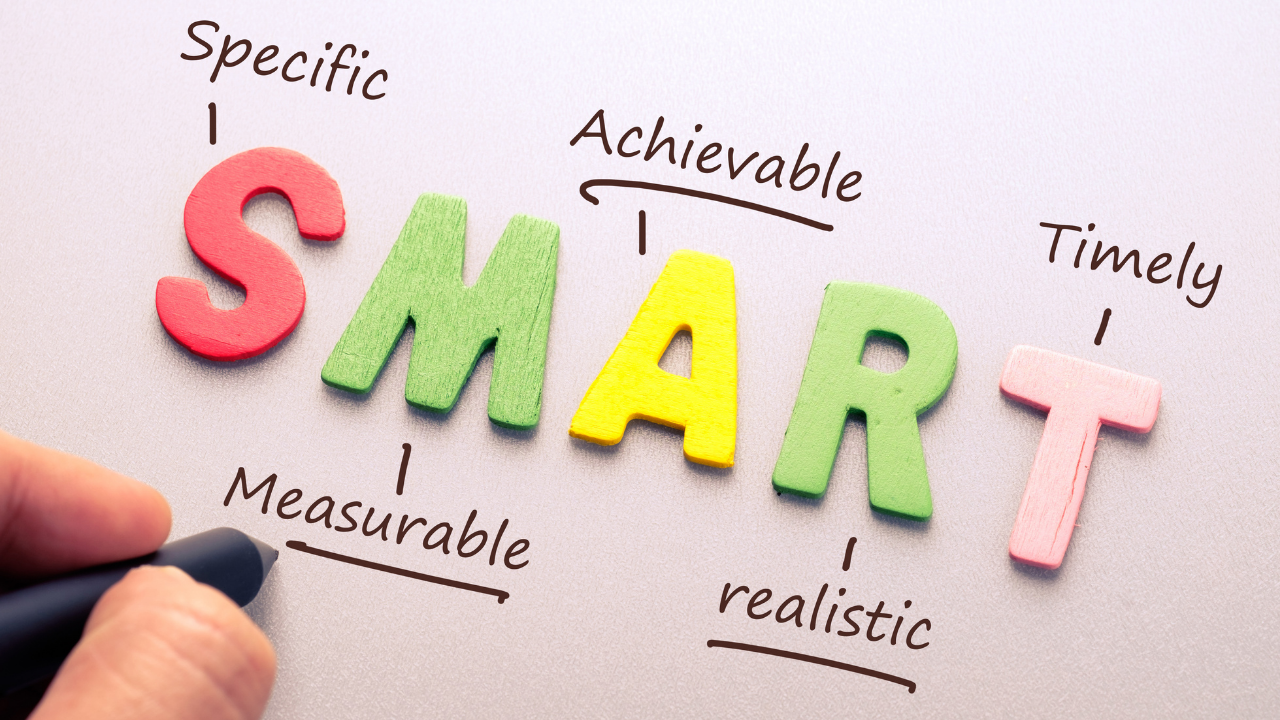Make SMART Goals - Create Success!

What are SMART Goals?
Goal creating is a significant aspect of our 4 Seasons Program and our private one-on-one coaching. We always make sure goals are SMART, and we work with our clients to make sure it fits with the five elements.
SMART goals must be specific, measurable, achievable, relevant, and Timely. Goals are created using specific criteria that ensure your objectives are attainable within a certain time frame. Writing a SMART goal entails working through each of those five components to build a measurable goal that encompasses precisely what needs to be accomplished and when and how you'll know when you're successful.
This approach eliminates generalities and guesswork, sets a clear timeline, and makes it that much easier to track progress and identify missed milestones.
Creating SMART Goals
To help understand how to create a SMART goal, we will use a typical example to discuss the five elements of the SMART goal. A common challenge we hear from our clients is getting enough water throughout the day. Hydration is essential for many reasons, but for busy women, it's hard to achieve.
S: Specific
For the goal to be effective, it needs to be specific. Do not be afraid to get into the little details, the more detailed, the better. Think about what you want to accomplish. In our example, the goal is to drink enough water. To make this more specific, we need to think about what we'd like to accomplish.
I want to increase my water intake daily.
What makes this specific? I want to increase my water daily. I could say I want to be more hydrated regularly, but I decided to use the word 'increase' about my water. Using the words increase and daily to helps this goal get more specific.
M: Measurable
Now that we have a specific goal we need to quantify it and make it measurable. This will allow us to track progress on our way to reaching our goal. In our example of drinking enough water, we need to know how much more water we'll consume.
I want to increase my water intake by 40 ounces daily. I will accomplish this by drinking 10 ounces of water at a time.
What makes this measurable? I've set a measurable amount within the goal. I want to increase by 40 ounces, and I've broken that down by choosing to drink 10 ounces of water when I can. I can measure out both 40 and/or 10 ounces of water. If I've sipped on 40 ounces of water by the end of the day, I know I'm on track. I know if I drink 10 ounces at a time, I can reach my daily 40 ounces.
A: Attainable
Now that we have a specific and measurable goal we need to have a reality check and make sure it's attainable. Goals should always be achievable and within reach; otherwise, you'll continue to fall short. If it's doable, you'll be able to achieve it, which builds confidence.
Attainability is easy when you're creating your own goals. This is because you know your capabilities and any environmental factors that could play a role in achieving your goals. Going back to our example, is drinking 40 more ounces of water something that is attainable? Can I drink 10 ounces of water at a time? Is that too much water? After I have answers to these questions, I can make adjustments.
R: Relevant
Is there a benefit to setting this goal, and does it matter to you? Your goals must be relevant to your mission statement and vision for your wellness. Does this goal help me get what you want out of my life, health, and wellness? This is why we let our clients choose their goals.
Drinking more water is important for burning fat, digestion, mental clarity, inflammation, and many other things related to wellness. It is important to me that I keep my body fit and feel young to continue to stay active and do the things I love. Water will help me achieve and maintain that.
T: Timely
Goals do not and cannot go on forever. There has to be an endpoint. This is another way to measure your success but also to help you stay on track. You may not need a month to work on staying hydrated and drinking enough water. Also, thinking about specific days for your goals and times within those days will keep your goal timely.
For the next two weeks, I will increase my water intake by 40 more ounces Monday through Friday. I will set alarms for 10 am, 12 pm, 2 pm, and 4 pm to remind me to drink 10 ounces of water each time my alarm goes off.
How is this timely? I've given three different elements of time here, starting with giving myself two weeks to improve. I've also decided that I want to accomplish this on Monday-Friday. The last aspect of time is setting alarms four times a day as a reminder to drink my water.

Other Goal Setting Practices
How do you ensure you'll achieve these goals? Creating the goals is just one step; there are other things to do to determine success.
- Write down your goal and tell someone. Writing it down will act as a reminder of what you're working to accomplish. Telling someone close to you will help you stay accountable.
Here is my final goal: For the next two weeks, I will increase my water intake by 40 more ounces Monday through Friday. I will set alarms for 10 am, 12 pm, 2 pm, and 4 pm to remind me to drink 10 ounces of water each time my alarm goes off.
- Check-in. This is especially important if it's a longer-term goal. You may lose interest or lose the connection to why you set the goal. However, checking in with your progress regularly will help keep that goal at the forefront. It will also help you determine what is working and if you need to make adjustments. A great way to do this is to grade yourself on how you're doing with the goal. Make sure you explain why you gave yourself that grade.
- Celebrate the small victories! Recognizing smaller wins will keep you moving in the right direction. Pat yourself on the back when you're successful, even if it's just one day. Let the people around you know what you did, no matter how small! This will help keep you motivated.
SMART goals can be used in any situation where you want to make progress. Start with one small goal to practice making it SMART; once you've become comfortable, you can add a few more small goals. Learn more about how we can help you with goal setting by requesting a coaching call.



